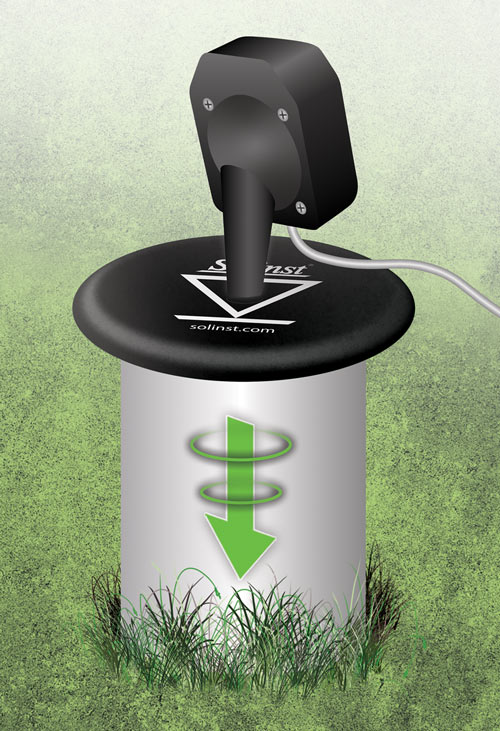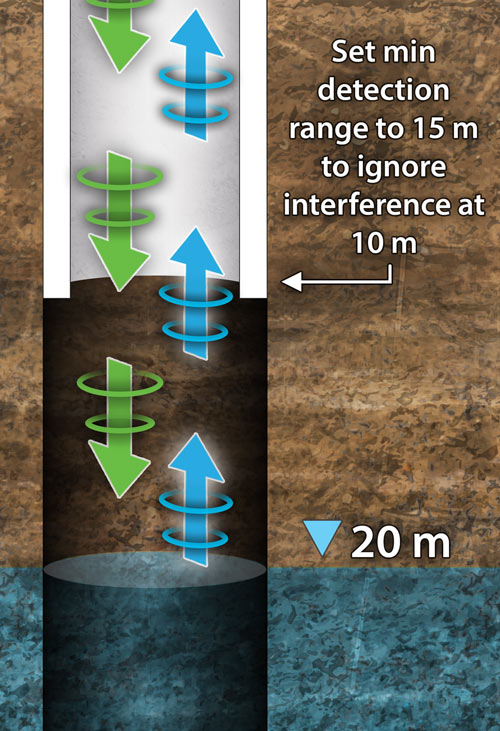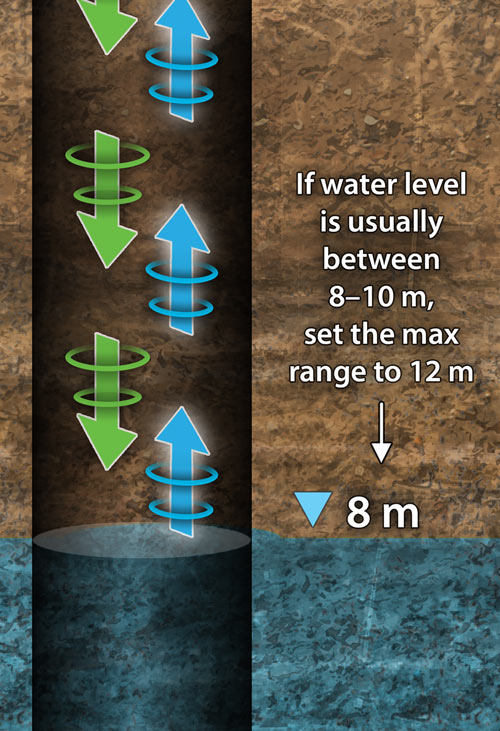Well Opening
The pulse generated by the Probe is an air pressure wave/low frequency sound wave. This is why there should be a good seal around the probe to prevent the air pressure from escaping an opening, which would result in not enough of the pulse going down the well. A good seal also prevents external noise, such as wind, from interfering with the signal.
Well Obstructions
The sound wave travels until it is disturbed. Each time it is disturbed by an imperfection in the well, some of the pulse is reflected, making the main pulse a little weaker. A complete imperfection, like the surface of the water, will reflect the entire remaining wave. Smaller obstructions, like tubing or wires, will not obstruct the pulse enough to affect the water level reading. However, larger interferences such as a small change in casing diameter, could reflect enough of the pulse to generate an erroneous reading. Setting a minimum detection range is helpful to ignore such interferences.
A drop tube should be used if there are more significant disturbances in the well, such as a large step-down in well casing diameter or perforated casing sections.
Depth to Water
The sound wave loses energy as it travels, and even more if the well casing is rough or porous. To compensate for this, the Probe increases its gain with time to listen for fainter signals. This can cause problems if the Probe listens for too long. The gain will get so high that pump noise or noise outside the well could outweigh the pulse. Therefore, the maximum range setting is available to tell the Probe how long to listen. E.g. if a pump is installed at 50 m, then set a maximum range of less than 50 m to avoid any interference from that depth.
In shallow wells, the sound wave bounces off the top and bottom of the well, so the pulse can bounce back and forth many times. E.g. in a well where the water level is at 2 m, the Probe would hear a reflection at 2 m, then again at 4 m, then 6 m etc., until the pulse gets weak enough to ignore. In this example, you would be able to see the multiple reflections by increasing the minimum range. When set to 3 m, the depth would read 4 m. When set to 5 m, it would read 6 m, etc. In this case, it may be helpful to leave a small leak at the probe to help dissipate the pulse.
Well Diameter
As well diameter increases, the strength of the sounds pulse weakens, therefore it is more susceptible to pump noise or interference from other imperfections. As such, wells larger than 8" in diameter should use a drop tube from top of well, to just below the depth to water for measurement.





